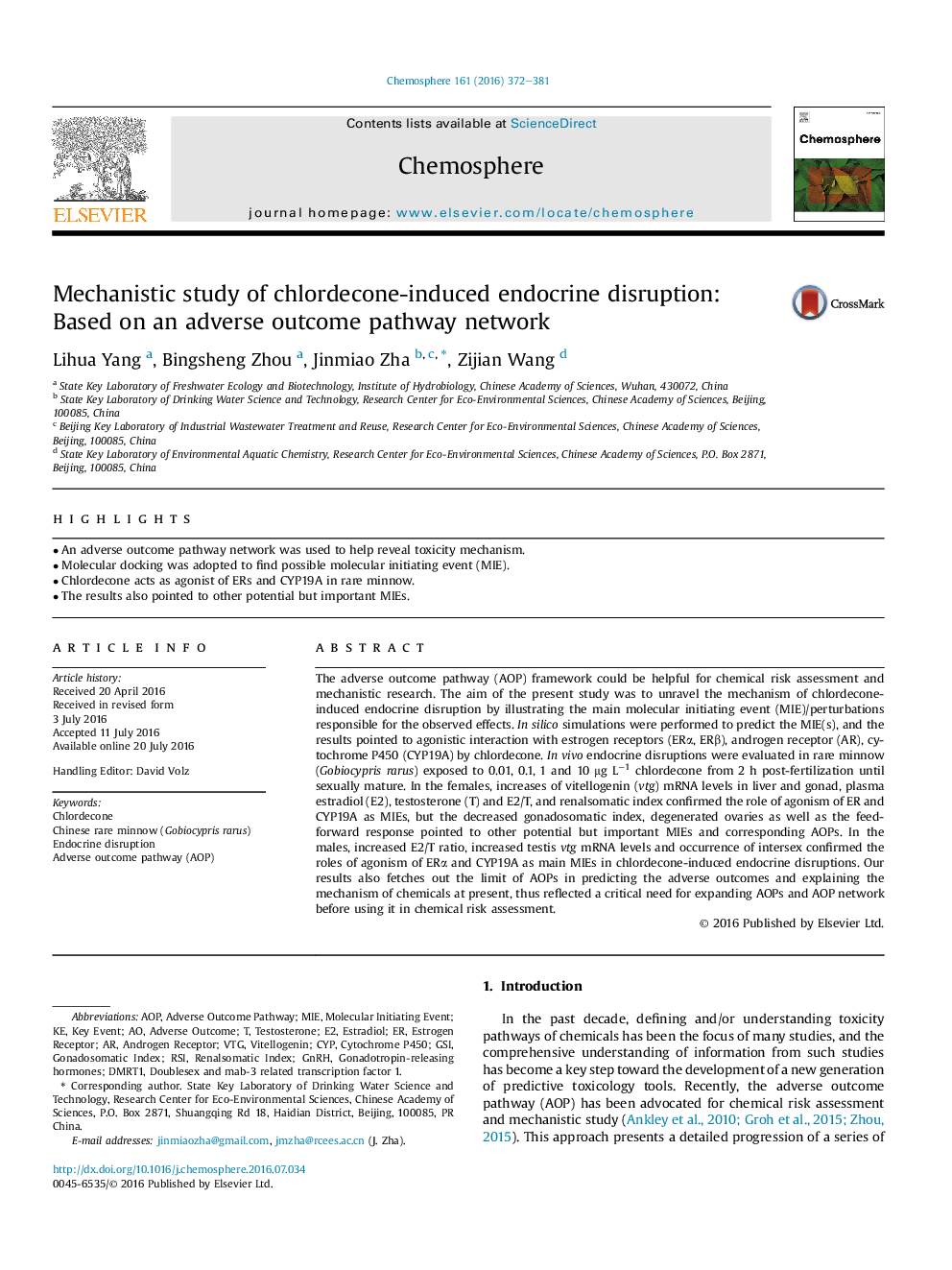| Article ID | Journal | Published Year | Pages | File Type |
|---|---|---|---|---|
| 6306542 | Chemosphere | 2016 | 10 Pages |
Abstract
The adverse outcome pathway (AOP) framework could be helpful for chemical risk assessment and mechanistic research. The aim of the present study was to unravel the mechanism of chlordecone-induced endocrine disruption by illustrating the main molecular initiating event (MIE)/perturbations responsible for the observed effects. In silico simulations were performed to predict the MIE(s), and the results pointed to agonistic interaction with estrogen receptors (ERα, ERβ), androgen receptor (AR), cytochrome P450 (CYP19A) by chlordecone. In vivo endocrine disruptions were evaluated in rare minnow (Gobiocypris rarus) exposed to 0.01, 0.1, 1 and 10 μg Lâ1 chlordecone from 2 h post-fertilization until sexually mature. In the females, increases of vitellogenin (vtg) mRNA levels in liver and gonad, plasma estradiol (E2), testosterone (T) and E2/T, and renalsomatic index confirmed the role of agonism of ER and CYP19A as MIEs, but the decreased gonadosomatic index, degenerated ovaries as well as the feed-forward response pointed to other potential but important MIEs and corresponding AOPs. In the males, increased E2/T ratio, increased testis vtg mRNA levels and occurrence of intersex confirmed the roles of agonism of ERα and CYP19A as main MIEs in chlordecone-induced endocrine disruptions. Our results also fetches out the limit of AOPs in predicting the adverse outcomes and explaining the mechanism of chemicals at present, thus reflected a critical need for expanding AOPs and AOP network before using it in chemical risk assessment.
Keywords
GnRHGSIAOPCyPChlordeconeVitellogeninMIEDMRT1RSIEndocrine disruptionEstradioltestosteronemolecular initiating eventKey eventCytochrome P450gonadosomatic indexdoublesex and mab-3 related transcription factor 1Adverse outcome pathway (AOP)adverse outcome pathwayAdverse outcomevtgAndrogen ReceptorEstrogen receptor
Related Topics
Life Sciences
Environmental Science
Environmental Chemistry
Authors
Lihua Yang, Bingsheng Zhou, Jinmiao Zha, Zijian Wang,
